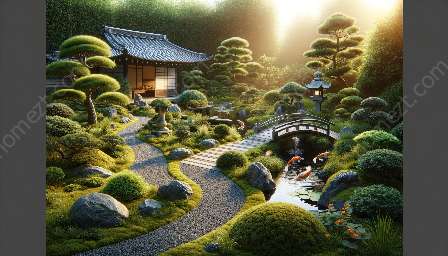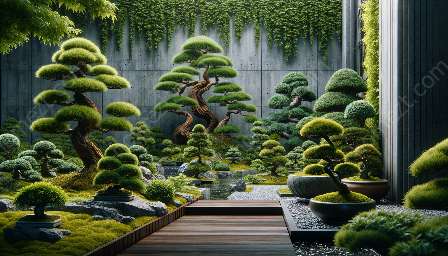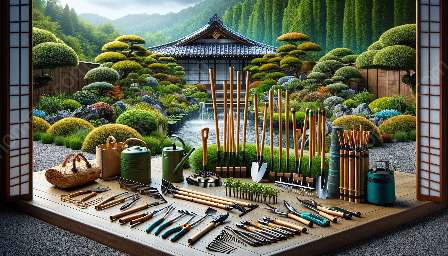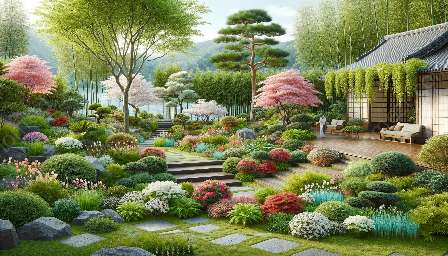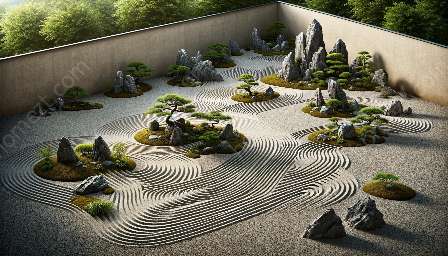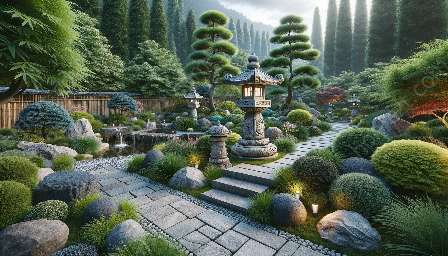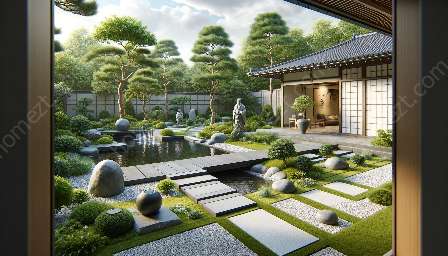Japanese garden design emphasizes the beauty of nature, harmony, and simplicity. In this topic cluster, we will explore the significance of Japanese plants and trees, understand their role in traditional and modern garden designs, and learn how to integrate them into your own landscaping projects. Let's delve into the enchanting world of Japanese gardens and discover the unique charm of their flora.
The Essence of Japanese Plants and Trees in Garden Design
Japanese gardens are renowned for their serene and contemplative atmosphere, achieved through meticulous attention to detail and a deep respect for the natural environment. Central to this aesthetic are the carefully selected plants and trees that populate these landscapes, each chosen for its symbolic meaning, aesthetic appeal, and ability to evoke a sense of tranquility and harmony.
One of the defining features of Japanese garden design is the use of native plants and trees, which are integrated to mimic the untouched beauty of the Japanese wilderness. These flora reflect the changing seasons, offering a dynamic and ever-evolving canvas that captures the essence of the natural world.
Traditional Japanese Plants and Trees
In traditional Japanese gardens, specific plants and trees hold cultural and symbolic significance. For example, the cherry blossom, or sakura, is an iconic symbol of renewal and the fleeting nature of life. The delicate beauty of this tree in full bloom is celebrated through the centuries-old tradition of hanami, the viewing of cherry blossoms.
The Japanese maple, or momiji, is another beloved tree in Japanese garden design. Its vibrant foliage transforms with the seasons, painting the landscape with hues of red, orange, and gold, symbolizing the passage of time and the impermanence of all things.
Other native plants, such as the elegant azaleas, serene moss gardens, and fragrant camellias, all play a role in creating an otherworldly ambiance that is deeply rooted in Japanese cultural and aesthetic traditions.
Integration into Modern Garden Design
While traditional Japanese garden design principles continue to inspire modern landscapes, the integration of Japanese plants and trees into contemporary garden designs has evolved to encompass a broader range of styles and interpretations. Whether you seek to create a tranquil retreat inspired by the Zen gardens of Kyoto or a vibrant urban oasis that captures the spirit of modern Japan, there are countless ways to incorporate Japanese flora into your garden design.
For example, the use of ornamental grasses, such as hakonechloa and miscanthus, can bring a sense of movement and texture to a garden, evoking the gentle sway of bamboo in the wind. The graceful form of Japanese maples can serve as focal points in a modern landscape, adding a touch of elegance and visual interest.
In addition, the concept of wabi-sabi, the embrace of imperfection and transience, has influenced modern garden design, allowing for a more organic and contemplative approach to incorporating Japanese plants and trees. This includes creating spaces that celebrate the natural cycle of growth, decay, and regeneration, aligning with the fundamental principles of Japanese garden aesthetics.
Cultivating Your Own Japanese-inspired Garden
Whether you are designing a small courtyard or a sprawling estate, the incorporation of Japanese plants and trees can enhance any outdoor space with a sense of tranquility and timeless beauty. From the delicate elegance of cherry blossoms to the graceful presence of Japanese maples, each plant and tree offers a unique opportunity to infuse your garden with the spirit of Japan.
Consider the seasons and how they can be reflected in your garden, from the vibrant colors of spring to the serene tranquility of winter. Pay close attention to textures, shapes, and patterns, embracing the art of pruning and shaping to evoke a sense of balance and harmony within your landscape.
By drawing inspiration from the rich tradition of Japanese garden design and carefully selecting plants and trees that resonate with your vision, you can create a timeless and enchanting outdoor space that pays homage to the legacy of Japanese gardening.
Conclusion
Japanese plants and trees hold a special place in garden design, offering a unique blend of cultural symbolism, natural beauty, and timeless elegance. Whether you are inspired by the tranquility of a traditional Japanese garden or seek to create a modern landscape that reflects the spirit of Japan, the incorporation of these flora can elevate your outdoor space to a new level of artistry and contemplation.
With an understanding of the significance of Japanese plants and trees, you can embark on a journey into the enchanting world of Japanese gardens, where every leaf, blossom, and branch tells a story of harmony, renewal, and the enduring connection between humanity and nature.


